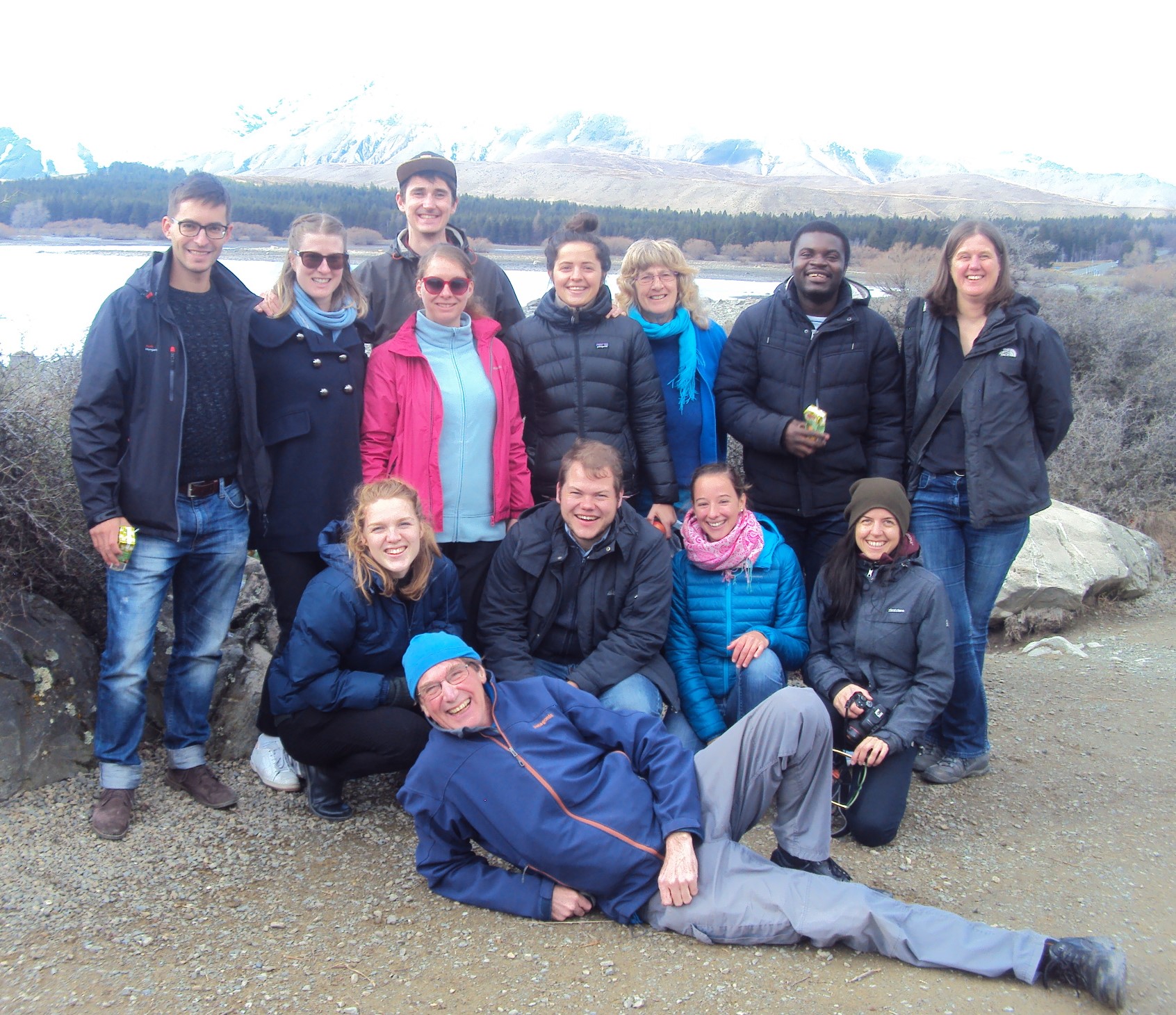NZ's first Professor of Landscape Architecture to retire
Lincoln’s School of Landscape Architecture is changing as two long serving champions retire after thirty-plus years shaping the discipline and its graduates. Last week we spoke to Mike Barthelmeh. Today we hear from Simon Swaffield.
A lecturing position advertised at Lincoln College in 1982 prompted landscape architects Simon Swaffield and Jenny Moore to set out from the UK on an OE. “It seemed like a good time to travel,” says Simon. They have now been here for 36 years and are New Zealand citizens, as Simon progressed to become head of department at Lincoln and in 1998 became New Zealand’s first Professor of Landscape Architecture.
Professor Simon Swaffield with students.
Over the years his major focus has been helping landscape architecture develop from a scholarly profession into a full university discipline, and it is now an important part of Lincoln’s academic profile. “I get real pleasure in seeing the Lincoln programme mature,” he says. “It was a real privilege to take on that role. We now have a well established school with great facilities offering degrees at every level, weathering volatility and change in the tertiary sector and within Lincoln.”
Simon notes that when he arrived in 1982 nearly all the landscape architecture jobs in New Zealand were in government agencies. That was upended by the political reforms of the eighties. “The changes were dramatic at every level, as organisations such as the Ministry of Works and New Zealand Forest Service were disestablished and roles were redefined. Landscape architecture was a small leaf floating on the top of the whirlpool, but the consequences for our profession were huge. By the 1990s we no longer had the same voice within the public sector.
Simon on a field trip with students.
“With the exception of a few larger local authorities we are now largely a private sector profession needing to advocate in the market for recognition of landscape issues. Landscape architects are now involved in most significant projects, but I’m not sure that we have achieved sufficient traction at a public policy level. That’s very much a work in progress.”
Simon suggests the New Zealand profession’s biggest achievement in the last 30 years has been the development of some “very sophisticated” multidisciplinary practices led by landscape architects. “When you look at the work that the established practices do and compare it with what happens internationally I think New Zealand can really hold its head high and say we have a very sound capability.
“In design terms we have been innovative in doing what the Dutch call ‘red for green’ - using development to create other values like biodiversity and recreation.” He cites as “pioneering” approaches such as the naturalisation of urban waterways and the way coastal development is used to help fund revegetation.
But Simon argues that to keep moving forward we need to deepen our approach to sustainability. He agrees with those who claim there’s still too much “lite green”. “We’re claiming to be sustainable but when you look at the whole life cycle of projects they are not always as green as they claim to be.”
And he thinks the profession still struggles to connect practice with research findings, meaning valuable new understanding is not utilised because landscape architects don’t know about it. “In an ideal world the university would be funded to go out and share new knowledge as an extension service. That won’t happen so we need to find better ways to collaborate”.
Simon at the opening of the new landscape building at Lincoln University.
On a personal level Simon reflects with pride on his own contribution to research into landscape change and the globalisation of local landscapes, and the international publication of his co-authored books on theory, research, and analysis, which have contributed to landscape education well beyond New Zealand. (see footnote)
Simon is retiring to make more time for tramping, sailing, and travelling - pastimes that brought Jenny and him to New Zealand in the first place. His last day at Lincoln is July 30, although he’ll continue advising postgraduate students and peer reviewing research. Simon also has an affiliate role at the University of Copenhagen and he’s engaged in a number of writing projects with colleagues in New Zealand and internationally.
(Footnote) Theory in Landscape Architecture, Penn Press 2002; Globalisation and Agricultural Landscapes Cambridge University Press 2010; Landscape Architecture Research, Wiley 2011; Landscape Analysis, Routledge 2017)


